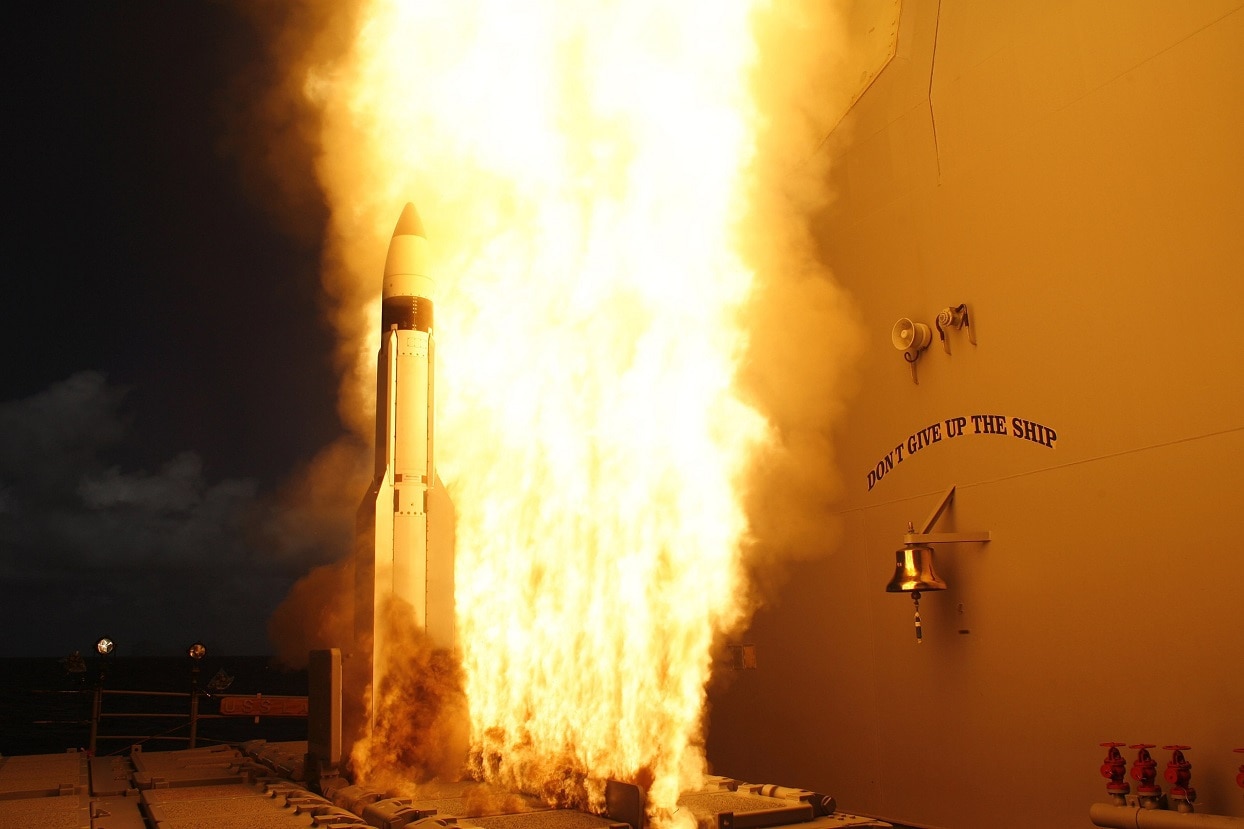The Pentagon recently released its annual report on China’s military developments and its findings are clear: China is eager to continue earning its keep as the Pentagon’s “pacing challenge,” while our military struggles to keep up.
China’s Naval Developments
Among a list of rapid developments in Beijing’s nuclear arsenal, growing missile capabilities, and widespread force modernization, the report indicates a few troubling trends when it comes to the differences in the size and strength of the Chinese People’s Liberation Army Navy (PLAN) versus the United States Navy.
When it comes to putting hulls in the water, Beijing is far and away ahead of the United States. China has continuously outpaced the U.S. in shipbuilding capabilities and shipyard capacity.
Indeed, the shipbuilding divide between China and the United States is vast. A recently declassified intelligence slide from the Office of Naval Intelligence estimates that China has 232 times the shipbuilding capability of the United States, owing to its much larger shipbuilding manufacturing industry.
The Pentagon’s China power report revealed that in the last year alone, Beijing’s navy increased the size of its fleet by 30 ships. By comparison, the U.S. Navy has grown by just two ships since last year.
China’s Accelerated Ship Building
The Pentagon estimates the size of the PLAN is north of 370 ships, making it the largest Navy in the world, whereas the U.S. has a combat-ready fleet size of 291.
Though the class and capability of those 30 new PLAN ships vary, 15 were modern surface combatants – including Reinhai class cruisers, Luyang class destroyers, and a third aircraft carrier, Fujian.
Furthermore, the report also indicates that the PLAN is expected to keep growing from 395 ships by 2025 to 435 by 2030.
While China’s navy is expected to increase by nearly 20 percent in just a half-decade, the Navy’s FY24 shipbuilding plan projects that it will keep getting smaller. Our fleet will shrink to 285 ships in 2025 and remain less than its size today, at 290 ships in 2030, as ship retirements consistently outpace new ship construction.
Alongside the growing and increasingly capable PLAN, China has continued its practice of military-civil fusion, which blurs or eliminates barriers between government and commercial sectors to build a more capable military at a rapid clip. The Pentagon’s report highlighted that in recent years China has focused on equipping civilian roll-on/roll-off boats (ROROs) with ramps modified to enable large vehicles to disembark while at sea.
If that sounds like the quiet build-up of amphibious capability, that’s because it is. The China Power report highlights that this development is “consistent with the PRC’s exploratory approach to testing multi-dimensional Taiwan seizure concepts.”
Similarly, the U.S. Marine Corps cannot secure enough funding for its amphibious warships. This forced Congress to intervene earlier this year to shore up funding for a new amphibious transport dock.
The report also highlighted that China is likely conducting “near-continuous at-sea deterrence patrols” with its undersea fleet of six nuclear-powered submarines and 48 diesel-powered submarines. Despite pending retirements of older hulls, the PLAN submarine fleet is expected to increase to 80 submarines by 2035, “… due to an expansion of submarine construction capacity.”
China’s trends are consistently opposite our own, with the U.S. submarine fleet expected to stand at just 57 boats in 2030. While the U.S. Navy’s entirely nuclear submarine fleet is more advanced and capable than the mixed fleet of the PLAN, the recent submarine depot maintenance backlog has rendered nearly 40 percent of the U.S. submarine fleet inoperable.
The U.S. Navy is one of the most effective deterrents to Chinese military action against Taiwan. However, if these trends don’t change, and soon, the Indo-Pacific will become more dangerous as Beijing will find itself in a far more advantageous position. The U.S. Navy is shrinking within the same timeline in which the report estimates that Beijing will pursue “full reunification” with Taiwan.
Not to be forgotten about recent trends vis-à-vis American and Chinese military power: the U.S. consistently overestimates how capable its armed forces will be in the near term, and regularly underestimates the speed at which Beijing is increasing its hard power capabilities.
Year after year the U.S. Navy remains saddled with shrinking and increasingly uncertain budgets. A strong Navy big enough to change the calculus of Xi Jinping regarding the benefits of a Chinese invasion of Taiwan will require robust budgets enacted on time. This will be far cheaper than any war in the South China Sea.
Now a 1945 Contributing Editor, Mackenzie Eaglen is a senior fellow at the American Enterprise Institute (AEI), where she works on defense strategy, defense budgets, and military readiness. She is also a regular guest lecturer at universities, a member of the board of advisers of the Alexander Hamilton Society, and a member of the steering committee of the Leadership Council for Women in National Security.

